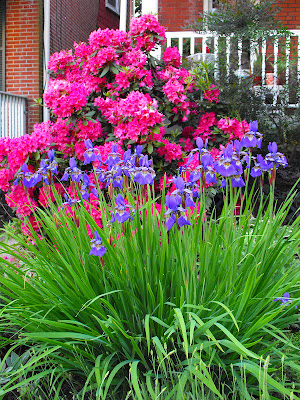Graduation speeches capture a reality our theories do not: that the self is not an atomic isolate, nor is it community bound and reliant on the predicates of those collectives for its identity. But it is both.
We are composites of others--a society of selves within each of us. We are born into communities, though not of our own choosing (choice is partially left to us later in life). We combine influences of our parents and family, our friends and our teachers. We derive meaning from collective affiliations, and identify our selves along with others. Yet we do so in ways that do invariably distinguish our selves from other selves; this we call our individuality. The danger is in elevating that individuality to the status of icon, or holy relic--inviolable and sacrosanct--for the truth of the matter is that by detaching the self from the communities in which that self resides, the self is violated for we reject or deny that which gives that self meaning.
The danger also lies in reducing individuality to a derivative of community, for the truth of the matter is that our individuality--those unique combinations of identities and influences, those composites of selves that we become--contributes to community, and by extinguishing individuality, we stagnate community and render it neutered to change. That we might call authoritarianism.
(Sorry, folks. I was (partially) trained as a theorist. See? A community of selves--theorist selves, geeks-a-million--revealing itself as a warped imagination.)
Speaking of warped....I think in a different world (and at a different age, oh...yeah...and a different socio-economic status) Dames Maggie Smith and Judi Dench would be two of my close friends. I seem to attract older women--guys, calm down--and enjoy hearing their stories. Okay, perhaps not all of the stories, for at some point in many a conversation (with the cashiers at Costco, or the teller at the bank), the subject morphs into health issues (not big things like cancer, but a little arthritis here, or a flabby underarm there). Goodness. And why do they tell me such things? Of course, you politely and sympathetically smile, offer friendly words of support, and move on when the opportunity presents itself. Which it doesn't until another customer appears. Phew. Thank goodness there are other people in the world to save me from myself--and from talk about flabby underarms!

As color in the garden morphs into rich and saturated summer hues, I suddenly see a society of selves, variously chatting, gossiping, sharing, and bonding.
And I thought of the Red Hat Society, the result, the website tells us, "of a few women deciding to greet middle age with verve, humor and elan." Members "believe silliness is the comedy relief of life, and since[they] are all in it together, [they] might as well join red-gloved hands and go for the gusto together."
Apparently, the Queen Mother (ahem, not that Queen Mum, but Sue Ellen Cooper, the Red Hat Society's founder), impulsively bought a bright red fedora one day. Later, she happened upon a poem by Jenny Joseph, entitled "Warning," in which an older woman bedecked herself in red hat and purple clothing. Sue Ellen borrowed the idea and gave a close friend a copy of the poem along with a red hat, and the gift-giving replicated itself birthday after birthday.
Charming.
And silly.
And lovely.
Viet and I have occasionally encountered the Red Hat Society at The British Bell Tea Room in Newark, DE. Gusto, indeed! If we were the staid parents in the corner, they were the riotous children in the center.
"Madames, please. This is a respectable establishment," I'd hear myself murmur under my breath, followed quickly by, "but by all means continue!"
The party at 410 has been building up for several weeks. The red tulips and the Blue Star Lithodora were the opening act,
followed many weeks later by the azalea and May Night Salvia.
The rhododendron quickly assumed prominence, which provided an eye-catching backdrop for the gradually opening Siberian Irises.
The Ben Franklin Double- (though not quite) Red Peony decided to join the conversation, which didn't last long after two heavy spring rains.
So here we are in the late May garden: not quite red, though certainly purple, flowers busily communing, laughing really. Lavatera (Red Rum) is in full regalia 5 weeks before her time (damn it; there will be nothing left in bloom for the Wilmington City Garden Contest in mid-June), while the Siberian Irises are now past their prime.
The color combination is simply inviting, perhaps because I think of the lively women of the Red Hat Society, and the words and laughter that freely and jovially pass their lips.















































